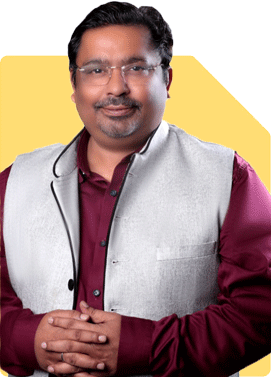My daughter 90percentile in jee mains 2025,and puc board exam 95.6 percentage and kcet is 101 marks we are obc ncl and catgory 1 reservation can we get nit surathkal college for admission or other top 3 college in bangalore and she want to take jee advance 2025 , which branchas scope and high package
Ans: As far as KCET is concerned,? here are the some approximate expected KCET opening and closing ranks for the OBC-NCL category across four top engineering colleges in Bengaluru:?
RV College of Engineering (RVCE)
Computer Science & Engineering: Opening – 2,000 | Closing – 3,000
Electronics & Communication Engineering: Opening – 2,500 | Closing – 3,500
Electrical & Electronics Engineering: Opening – 3,000 | Closing – 4,500
Mechanical Engineering: Opening – 4,000 | Closing – 6,000
Civil Engineering: Opening – 5,000 | Closing – 7,000?
BMS College of Engineering (BMSCE)
Computer Science & Engineering: Opening – 2,500 | Closing – 4,000
Electronics & Communication Engineering: Opening – 3,000 | Closing – 5,000
Electrical & Electronics Engineering: Opening – 4,500 | Closing – 6,500
Mechanical Engineering: Opening – 6,000 | Closing – 8,000
Civil Engineering: Opening – 7,000 | Closing – 9,000?
M S Ramaiah Institute of Technology (MSRIT)
Computer Science & Engineering: Opening – 2,200 | Closing – 3,800
Electronics & Communication Engineering: Opening – 3,500 | Closing – 5,500
Electrical & Electronics Engineering: Opening – 5,000 | Closing – 7,000
Mechanical Engineering: Opening – 6,500 | Closing – 8,500
Civil Engineering: Opening – 7,500 | Closing – 9,500?
Dayananda Sagar College of Engineering (DSCE)
Computer Science & Engineering: Opening – 3,000 | Closing – 5,000
Electronics & Communication Engineering: Opening – 4,500 | Closing – 6,500
Electrical & Electronics Engineering: Opening – 6,000 | Closing – 8,000
Mechanical Engineering: Opening – 7,500 | Closing – 9,500
Civil Engineering: Opening – 8,500 | Closing – 10,500?
Note: The above ranks are indicative and based on available data for the OBC-NCL category. Every year, actual cutoffs may vary based on factors like seat availability, reservation policies, and candidate preferences.
?Regarding the chances of getting seats through JEE/JoSAA Counselling, here is, How to Predict Your Chances of Admission into NIT or IIIT or GFTI After JEE Main Results – A Step-by-Step Guide.
Providing precise admission chances for each student can be challenging. Some reputed educational websites offer ‘College Predictor’ tools where you can check possible college options based on your percentile, category, and preferences. However, for a more accurate understanding, here’s a simple yet effective 9-step method using JoSAA’s past-year opening and closing ranks. This approach gives you a fair estimate (though not 100% exact) of your admission chances based on the previous year’s data.
Step-by-Step Guide to Check Your Daughter's Admission Chances Using JoSAA Data
Step 1: Collect Your Daughter's Key Details
Before starting, note down the following details:
Her JEE Main percentile
Her category (General-Open, SC, ST, OBC-NCL, EWS, PwD categories)
Her Preferred institute types (NIT, IIIT, GFTI)
Her Preferred locations (or if you're open to any location in India)
List of at least 3 preferred academic programs (branches) as backups (instead of relying on just one option)
Step 2: Access JoSAA’s Official Opening & Closing Ranks
Go to Google and type: JoSAA Opening & Closing Ranks 2024
Click on the first search result (official JoSAA website).
You will land directly on JoSAA’s portal, where you can enter your details to check past-year cutoffs.
Step 3: Select the Round Number
JoSAA conducts five rounds of counseling.
For a safer estimate, choose Round 4, as most admissions are settled by this round.
Step 4: Choose the Institute Type
Select NIT, IIIT, or GFTI, depending on your preference.
If your daughter is open to all types of institutes, check them one by one instead of selecting all at once.
Step 5: Select the Institute Name (Based on Location)
It is recommended to check institutes one by one, based on your preferred locations.
Avoid selecting ‘ALL’ at once, as it may create confusion.
Step 6: Select her Preferred Academic Program (Branch)
Enter the branches you are interested in, one at a time, in your preferred order.
Step 7: Submit and Analyze Results
After selecting the relevant details, click the ‘SUBMIT’ button.
The system will display Opening & Closing Ranks of the selected institute and branch for different categories.
Step 8: Note Down the Opening & Closing Ranks
Maintain a notebook or diary to record the Opening & Closing Ranks for each institute and branch you are interested in.
This will serve as a quick reference during JoSAA counseling.
Step 9: Adjust Your Expectations on a Safer Side
Since Opening & Closing Ranks fluctuate slightly each year, always adjust the numbers for safety.
Example Calculation:
If the Opening & Closing Ranks for NIT Delhi | Mechanical Engineering | OPEN Category show 8622 & 26186 (for Home State), consider adjusting them to 8300 & 23000 (on a safer side).
If the Female Category rank is 34334 & 36212, adjust it to 31000 & 33000.
Follow this approach for Other State candidates and different categories.
Pro Tip: Adjust your expected rank slightly lower than the previous year's cutoffs for realistic expectations during JoSAA counseling.
Can This Method Be Used for JEE April & JEE Advanced?
Yes! You can repeat the same steps after your April JEE Main results to refine your admission possibilities.
You can also follow a similar process for JEE Advanced cutoffs when applying for IITs.
Want to Learn More About JoSAA Counseling?
If you want detailed insights on JoSAA counseling, engineering entrance exams, preparation strategies, and engineering career options, check out EduJob360’s 180+ YouTube videos on this topic!
Hope this guide helps! All the best for your daughter's admissions!
Follow RediffGURUS to Know more on 'Careers | Health | Money | Relationships'.
.jpg)






















